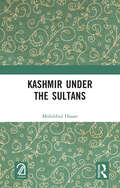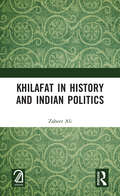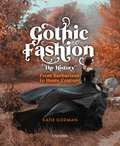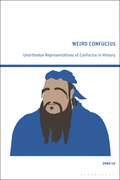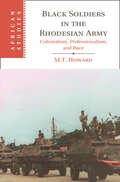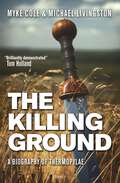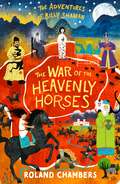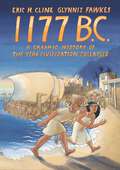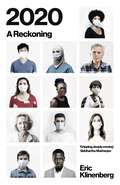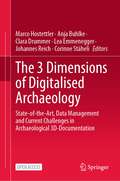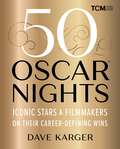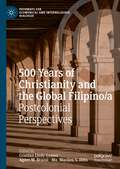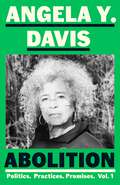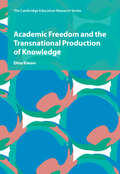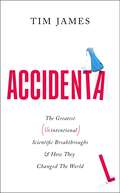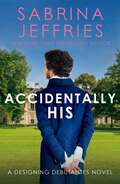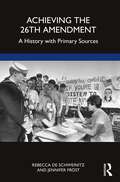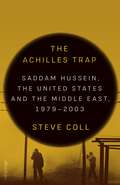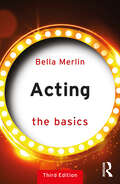- Table View
- List View
Kashmir Under the Sultans
by Mohibbul HasanKashmir Under Sultans introduces the reader to a subject that begins with the foundation of the Sultanate and ends with the conquest of Kashmir by Akbar. During the Sultanate period, Kashmir had achieved a high standard of culture, but with the disappearance of her independence, her culture gradually declined. Poets, painters, and scholars had to leave the Valley and seek their livelihood elsewhere owing to the absence of local patronage. They then entered the service of the Mughal emperors and were added to the court, thereby lessening the cultural impoverishment of Kashmir. The book encloses political, social, economic and cultural activities that had a lasting influence on the Kashmir Valley in that period. It is of considerable value to social historians as Professor Mohibbul Hasan offers insights into political and cultural currents and crosscurrents in Kashmir. This title is co-published with Aakar Books. Print editions not for sale in South Asia (India, Sri Lanka, Nepal, Bangladesh, Pakistan and Bhutan)
Khilafat in History and Indian Politics
by Zaheer AliThis book is a brief historical account of Khilafat, an Islamic political institution mired in controversies from its inception. It is an attempt to present an objective critique of the Islamic polity that, in a way, was primarily responsible for crafting schisms in Islam with its commencement. By the time the last Khilafat of the Ottomans came to an end in the aftershock of the Second World War, the Muslim political elite in India launched a movement for the restoration and continuation of the Ottoman Khilafat. The most paradoxical dimension of the issue was that in the Arab peninsula, the epicenter of Islam, the people were struggling to cast away the yoke of the Ottoman Khilafat, then why were the Indian Muslims emotionally involved in a movement that was vehemently condemned and assailed by a majority of Muslims outside the Indian subcontinent? This title is co-published with Aakar Books. Print editions not for sale in South Asia (India, Sri Lanka, Nepal, Bangladesh, Pakistan and Bhutan)
Khilafat in History and Indian Politics
by Zaheer AliThis book is a brief historical account of Khilafat, an Islamic political institution mired in controversies from its inception. It is an attempt to present an objective critique of the Islamic polity that, in a way, was primarily responsible for crafting schisms in Islam with its commencement. By the time the last Khilafat of the Ottomans came to an end in the aftershock of the Second World War, the Muslim political elite in India launched a movement for the restoration and continuation of the Ottoman Khilafat. The most paradoxical dimension of the issue was that in the Arab peninsula, the epicenter of Islam, the people were struggling to cast away the yoke of the Ottoman Khilafat, then why were the Indian Muslims emotionally involved in a movement that was vehemently condemned and assailed by a majority of Muslims outside the Indian subcontinent? This title is co-published with Aakar Books. Print editions not for sale in South Asia (India, Sri Lanka, Nepal, Bangladesh, Pakistan and Bhutan)
Gothic Fashion The History: From Barbarians to Haute Couture
by Katie GodmanFrom the ancient barbarians responsible for the fall of Rome, to the black-lipped teenager updating their Instagram from a graveyard, Goths have been with us for a long time. Ideas about what is Gothic have changed and mutated, but a fascination with the dark and dramatic has remained a constant. The History of Gothic Fashion charts Gothic dress from its ancient and medieval origins to its various revivals and romanticised rebirths, examining its cultural inspirations including folk lore, 19th-century novels, the silver screen and rock music. For a subculture associated with literature and historical fashion, there are surprisingly few books that focus solely on Gothic fashion. The History of Gothic Fashion provides an in-depth overview of the evolution of the darker side of style.
Prisoners of Jan Smuts: Italian Prisoners of War in South Africa in WWII
by Karen HornEqually skilled in a variety of trades other than in the art of love, the Italian prisoners of war (POWs) who were incarcerated in South Africa during the Second World War are a source of great fascination to this day. Who were these men? And what made some of them attempt dramatic escapes, while others wanted to stay behind after the war? The first Italian POWs arrived in the Union of South Africa in early 1941, most of them being held in Zonderwater Camp outside Cullinan or in work camps across the country. The government of Jan Smuts saw them as a source of cheap labour that would contribute to harvesting schemes, road-building projects such as the old Du Toit's Kloof Pass between Paarl and Worcester and even to prickly-pear eradication schemes. Prisoners of Jan Smuts recounts the stories of survival and shenanigans of the Italian POWs in the Union through the eyes of five prisoners who had documented their experiences in memoirs and letters. While many POWs seemed to appreciate the opportunities to gain new skills, others clung to the Fascist ideas they had grown up with and refused to work. Many opted to remain in South Africa once the war had ended, forging quite a legacy. These included sculptor Edoardo Villa, who left an important mark in the local and international art world, and businessman Aurelio Gatti, who built an ice-cream empire whose gelato was to delight generations of South Africans.
Weird Confucius: Unorthodox Representations of Confucius in History
by Zhao LuSpanning antiquity until the present, Zhao Lu analyses the eclectic and fictitious representations of Confucius that have been widely celebrated by communities of people throughout history.While mainstream scholarship mostly considers Confucius in terms of his role as a celebrated man of wisdom and as a teacher with a humanistic worldview, Zhao addresses the weirder representations. He considers depictions of Confucius as a prophet, a fortune-teller, a powerful demon hunter, a shrewd villain of 19th century American newspapers, an embodiment of feudal evils in the Cultural Revolution, and as a cute friend.Zhao asks why some groups would risk contradicting the well-accepted image of Confucius with such representations and shows how these illustrations reflect the specific anxieties of these communities. He reveals not only how people across history perceived Confucius in diverse ways, but more importantly how they used Confucius in daily life, ranging from calming their anxiety about the future, to legitimizing a dynasty, stereotyping Chinese people, and even to forging a new sense of history.
Black Soldiers in the Rhodesian Army: Colonialism, Professionalism, and Race (African Studies)
by null M. T. HowardDuring Zimbabwe's war of liberation (1965–80), fought between Zimbabwean nationalists and the minority-white Rhodesian settler-colonial regime, thousands of black soldiers volunteered for and served in the Rhodesian Army. This seeming paradox has often been noted by scholars and military researchers, yet little has been heard from black Rhodesian veterans themselves. Drawing from original interviews with black Rhodesian veterans and extensive archival research, M. T. Howard tackles the question of why so many black soldiers fought steadfastly and effectively for the Rhodesian Army, demonstrating that they felt loyalty to their comrades and regiments and not the Smith regime. Howard also shows that units in which black soldiers served – particularly the Rhodesian African Rifles – were fundamental to the Rhodesian counter-insurgency campaign. Highlighting the pivotal role black Rhodesian veterans played during both the war and the tumultuous early years of independence, this is a crucial contribution to the study of Zimbabwean decolonisation.
The Killing Ground: A Biography of Thermopylae
by Myke Cole Dr Michael LivingstonAn exploration into why and how Thermopylae is one of the most blood-soaked patches of ground in history – and what its past can tell us about our future.'Brilliantly demonstrated.' - Tom HollandSince the dawn of the Classical Era up to World War II, thousands have lost their lives fighting over the pass at Thermopylae. Historians Cole and Livingston provide an exciting account of each of the 27 battles and holding actions that took place. The epic events of 480 BC when 300 Spartans attempted to hold the pass has been immortalised in poetry, art, literature and film. But no history has ever detailed the other events from the very first battle through to the battles fought by Romans, Byzantines, Huns and Ottomans during the early and late medieval periods and finally the two desperate struggles against German occupying forces during World War II. The Killing Ground details the background and history of each conflict, the personalities and decision making of the commanders, the arms and tactics of the troops, and how each battle played out. Cole and Livingston have surveyed the ground to provide a boots-on understanding of each battle. Their command of multiple ancient and medieval languages means they have provided their own translations of much of the source material, ensuring new insights into each battle. This uncompromising scholarship is woven together into a compelling and unforgettable history that grips the reader from start to finish.
The War of the Heavenly Horses (The Adventures of Billy Shaman #2)
by Roland ChambersA new adventure series about the pivotal moments of discovery through the ages, bringing the past to life with a generous helping of fantasy, humour and delightful, black and white illustrations.Shaman by name and shaman by nature... Billy just hasn't found his magic yet... but he is learning fast.No one is more surprised than Billy when he wakes up on a Chinese battlefield. Scooped from the jaws of death by a boy called Han, Billy's far from rescued. Taking refuge in the royal stables, the boys are soon held hostage by the Emperor Wudi. He's at war with the Horse King whose powerful and magical herd of horses, the heavenly horses of Ferghana, he wants for his own. It takes all Billy's skills and a very special spirit horse to get Han to safety and Billy back to his friend Charles Darwin, a two-hundred-year-old talking tortoise.Join Billy, a new kind of explorer who sets out to return artefacts to their original home.
1177 B.C.: A Graphic History of the Year Civilization Collapsed
by Eric H. Cline Glynnis FawkesA beautiful, full-color graphic version of Eric Cline&’s bestselling 1177 B.C., adapted by award-winning author-illustrator Glynnis FawkesEric Cline&’s 1177 B.C. tells the story of one of history&’s greatest mysteries: what caused the ancient civilizations of the Aegean and Eastern Mediterranean to collapse more than three thousand years ago, bringing the Late Bronze Age to an abrupt end? In this vivid and captivating full-color graphic adaptation of the landmark book, author-illustrator Glynnis Fawkes invites us to follow two young friends living in the aftermath of the cataclysm as they unravel why it happened—and reveal important lessons for today&’s interconnected and vulnerable world.Pel, a member of the marauding Sea Peoples, and Shesha, an Egyptian scribe, visit the kingdoms of the Minoans, Mycenaeans, Hittites, Canaanites, Assyrians, and Egyptians to explore the calamities that brought them down. This graphic history depicts the people, events, art, architecture, and lands that Pel and Shesha encounter. We witness the Sea Peoples&’ battles on land and sea, earthquakes on the Greek mainland, droughts and famine in Anatolia, invasions in north Syria, and possible rebellions in Canaan. Along the way, we also learn about the assassination of a Hittite prince traveling to marry an Egyptian queen, the sinking of a merchant ship laden with international goods, and the return of a pair of sandals to Crete by the Babylonian king Hammurabi.An entertaining adventure story, this dazzling comic is also historically accurate and enlightening, inviting readers of all ages to think about the surprising factors and theories that explain why societies, whether ancient or modern, die or survive when struck by catastrophes.
2020: A Reckoning
by Eric KlinenbergRenowned sociologist and best-selling author Eric Klinenberg turns a year of devastation into a year of revelation in this wise, deeply researched and cathartic account of the pandemic.'A gripping, deeply moving account' SIDDHARTHA MUKHERJEE, author of The Song of the CellWhat unites us? What divides us? What do we value? Sociologist Eric Klinenberg had been studying what crises reveal about societies for over two decades when his home of New York became the deadliest hot spot of the global pandemic. In this book he tells the deeply reported stories of seven ordinary people trying to survive at the epicentre of the crisis, and combines them with data gathered from around the world to provide unprecedented insights into what societies are made of, why they come together or fall apart, and how they shape our lives.'Compellingly reveals what the pandemic laid bare about our culture, our institutions, and ourselves' Matthew Desmond, author of Evicted'A book that's at once intimate and far-ranging, that reveals the importance of social solidarity and also its fragility' Elizabeth Kolbert, author of The Sixth Extinction
The 3 Dimensions of Digitalised Archaeology: State-of-the-Art, Data Management and Current Challenges in Archaeological 3D-Documentation
by Marco Hostettler Anja Buhlke Clara Drummer Lea Emmenegger Johannes Reich Corinne StäheliThis open access book aims to provide an overview of state-of-the-art approaches to 3D documentation from a practical perspective and formulate the most important areas for future developments. Bringing together a wide range of case studies, examples of best practice approaches, workflows, and first attempts to establish sustainable solutions to pressing problems, this book offers readers current practical advice on how to approach 3D archaeology and cultural heritage.Divided into five parts, this book begins with an overview of 3D archaeology in its present state. It goes on to give insights into the development of the technology and recent cutting-edge applications. The next section identifies current challenges in 3D archaeology and then presents approaches and solutions for data management of a large number of 3D objects and ways to ensure sustainable solutions for the archiving of the produced data. This book will be of interest to researchers working in the fields of archaeology, heritage management, and digital humanities in general.
50 Oscar Nights: Iconic Stars & Filmmakers on Their Career-Defining Wins
by Dave KargerAn exclusive look behind the scenes of the Academy Awards as top stars and filmmakers discuss their Oscar wins and tell never-before-told tales of Hollywood's biggest night, in a collection of original interviews with Turner Classic Movies host and entertainment media journalist Dave Karger. For almost a century, movie fans have been riveted by the Academy Awards and the stars who have won Oscars. 50 Oscar Nights takes readers behind the scenes of Hollywood&’s most storied awards show through new and exclusive interviews with dozens of A-list actors, filmmakers, and craftspeople spanning sixty years of the Oscars. Here these artists reflect on their winning work and recount all the details of how they got ready, how they felt when they heard their name and got up on stage to accept their award, what they wore, how the entire experience impacted their life, and more. Some interviews bring to light fun stories like why Hilary Swank decided to celebrate her Academy Award at the Astro Burger in West Hollywood, or insight into the work as Elton John explains why he was convinced he won his Best Original Song award for the wrong tune. Other interviews illuminate why for some honorees, such as Julia Roberts, John Legend, and Octavia Spencer, the day remains a life highlight to be treasured, while for Marlee Matlin, Mira Sorvino, and Barry Jenkins, complex emotions cloud what most think would be a purely celebratory moment. Filled with more than 150 photos of red-carpet moments, emotional acceptances, and after-party play, 50 Oscar Nights is both a stunning record of cinema glamour and a must-read for any movie lover. Full list of interviewees: Nicole Kidman, Elton John, Jennifer Hudson, Steven Spielberg, Jane Fonda, Barry Jenkins, Halle Berry, J. K. Simmons, Julia Roberts, John Legend, Rita Moreno, Martin Scorsese, Marlee Matlin, Dustin Hoffman, Hannah Beachler, Cameron Crowe, Mira Sorvino, Kevin O&’Connell, Sally Field, Kristen Anderson-Lopez and Robert Lopez, Eddie Redmayne, Lee Grant, Louis Gossett Jr., Hilary Swank, Clint Eastwood, Jessica Yu, Michael Douglas, Catherine Martin, Francis Ford Coppola, Allison Janney, Mel Brooks, Emma Thompson, Peter Jackson, Marcia Gay Harden, Mark Bridges, Sofia Coppola, Joel Grey, Glen Hansard and Markéta Irglová, Olivia Colman, Rob Epstein, Whoopi Goldberg, Alan Menken, Melissa Etheridge, Sissy Spacek, Keith Carradine, Estelle Parsons, Geoffrey Fletcher, Octavia Spencer, Aaron Sorkin, Meryl Streep
500 Years of Christianity and the Global Filipino/a: Postcolonial Perspectives (Pathways for Ecumenical and Interreligious Dialogue)
by Cristina Lledo Gomez Agnes M. Brazal Ma. Marilou S. IbitaThe year 2021 marked the five-hundredth anniversary of Christianity in the Philippines. With over 90% of the Filipin@s (Filipino/as) in the country and more than eight million around the world identifying as Christian, they are a significant force reshaping global Christianity. The fifth centenary called for celebration, reflection, and critique. This book represents the voices of theologians in the Philippines, the United States, Australia, and around the world examining Christianity in the Philippines through a postcolonial theological lens that suggests the desire to go beyond the colonial in all its contemporary manifestations. Part 1, “Rethinking the Encounters,” focuses on introducing the context of Christianity’s arrival in the archipelago and its effect on its peoples. Part 2, “Reappropriation, Resistance, and Decolonization,” grapples with the enduring presence of coloniality in Filipin@ religious practices. It also celebrates the ways Christianity has been critically and creatively reimagined.
'70s Teen Pop (Genre: A 33 1/3 Series)
by Lucretia Tye JasmineTeen pop is a sub-genre of popular music marketed to tweens and teens. Its melodic yearning and veneer of sincerity appeal to an emerging romantic eroticism and autonomy. But tweens and teens buy music that isn't primarily marketed to them, too. Teen pop encompasses several kinds of musical styles, not limiting itself to just one-teen pop wants to play. During the 1970s, teen pop sometimes worked subversively, challenging the status quo it seemed to represent. Male pop stars such as David Cassidy were shown suggestively in popular magazines and female pop stars such as Cher had their own TV shows. Teen magazines, pin-ups, comics, films, and TV programs provided luscious visual stereo, promoting fashion styles, lingo, and dance moves, signaling individual identity but also community. The music provided a way for young people to believe they had something all their own, an authenticity experimenting with sexuality and social conduct, all dressed up in glitter and satin, blue jeans and boom boxes, torn fishnets and safety pins and, magically, their dreams. Cartoon pop and made-for-TV bands! Bubblegum pop! Glam! Hip hop! Hard rock and pop rock and stadium rock! Punk! Disco! Teen pop reinforced aspects of the counterculture it absorbed as the music kept playing-and playing back.Although it's very difficult to attain and maintain social progress and play it forward-there are so many tragedies-'70s Teen Pop examines how liberation and a true counterculture can be possible through music.
Abgrenzen, Entgrenzen, Begrenzen: Zur Geschichte des Liminalen in der Moderne (1800 | 2000. Kulturgeschichten der Moderne #16)
by Hannah Ahlheim Franziska RehlinghausGrenzen strukturieren nicht nur die Ordnung von Landschaft und Herrschaft, sondern auch von Gesellschaft. Als soziale Konstrukte vereindeutigen sie Zustände, öffnen aber auch Räume für Aushandlungen und Überschreitungen. In der Moderne dienten praktische und metaphorische »Grenzgänge« dazu, Beziehungen, die Verhältnisse gesellschaftlicher Teilsysteme und die Reichweite von Normen zu klären. Die Beiträger*innen schauen auf die Denkfigur des »Grenzgangs«, die es ermöglicht, zentrale Fragen moderner Gesellschaften zusammenzudenken: Gewaltvolle Identitätskämpfe, der Umgang mit funktionaler Differenzierung und mit der Fragilität von Werten und Wissen offenbaren sich als Praktiken, mit denen Grenzen gezogen, überquert oder ausgehandelt wurden.
Abolition: Politics, Practices, Promises, Vol. 1
by Angela Y. DavisFrom trailblazing political activist Angela Y. Davis, a major new collection of essays and interviews that argue for a radical rethinking of our prison systemsAn icon of revolutionary politics, Angela Y. Davis has been at the forefront of collective movements for prison abolition for over fifty years. Abolition: Politics, Practices, Promises, the first of two important new volumes, brings together an essential collection of Davis’s essays, conversations, and interviews over the years, showing how her thinking has sharpened and evolved even as she has remained uncompromising in her commitment to collective liberation.Davis traces a genealogy of the penal system, from slavery to the prison industrial complex, offering a trenchant analysis of the relationship between the prison system and capitalism, both in the US and on a global scale. Combining decades of analytical brilliance and lessons from organising both inside and beyond prison walls, Davis addresses the history of abolitionist practice, details the unique contributions of women to abolitionist struggles, and offers the radical tools we need for revolutionary change.Powerful and rewarding, filled with insight and provocation, Abolition: Politics, Practices, Promises, is essential reading for anyone seeking to imagine a world without prisons.‘A woman of undeniable courage. She should be heard’ New York Times‘She has eyes in the back of our head. With her we can survive and resist’ John Berger‘Behold the heart and mind of Angela Davis: open, relentless, and on time! She is as radiant, she is as true, as that invincible sunrise’ June Jordan
Academic Freedom and the Transnational Production of Knowledge (Cambridge Education Research)
by null Dina KiwanPublic debates on academic freedom have become increasingly contentious, and understandings of what it is and its purposes are contested within the academy, policymakers and the general public. Drawing on rich empirical interview data, this book critically examines the understudied relationship between academic freedom and its role in knowledge production across four country contexts - Lebanon, the UAE, the UK and the US - through the lived experiences of academics conducting 'controversial' research. It provides an empirically-informed transnational theory of academic freedom, contesting the predominantly national constructions of academic freedom and knowledge production and the methodological nationalism of the field. It is essential reading for academics and students of the sociology of education, as well as anyone interested in this topic of global public concern. This title is part of the Flip it Open Programme and may also be available Open Access. Check our website Cambridge Core for details.
Accidental: The Greatest (Unintentional) Science Breakthroughs and How They Changed The World
by Tim James'Who said science was dry? Certainly not Tim James' New York Post 'James writes with infectious enthusiasm and optimism' Kirkus Reviews 'A science teacher by profession, Mr. James knows how to get his audience's attention' Wall Street Journal 'Humorous, yet deep' Professor Charles AntoineA rip-roaring adventure through science gone wrong, and accidentally changing humanity (mostly) for the better.We may imagine that science is a process of breakthroughs and light bulb moments. But in reality, science goes wrong 99% of the time.Almost every idea a scientist comes up with is quickly disproved by a failed experiment or rival research. Science moves at a rate of inches per decade and we often like it that way. But occasionally, just occasionally, a complete fluke happens and changes everything as we know it. From an untimely sneeze in a petri dish leading to the groundbreaking creation of antibiotics, to the incredible discovery of microwaves via melted chocolate, Accidental is a rip-roaring adventure through science gone wrong, and accidentally changing humanity for the better.
Accidentally His: A dazzling new novel from the Queen of the sexy Regency romance! (Designing Debutantes)
by Sabrina JeffriesIf you love Julia Quinn's Bridgerton, you'll fall head over heels for Sabrina Jeffries!'Anyone who loves romance must read Sabrina Jeffries!' Lisa Kleypas, New York Times bestselling authorThe Designing Debutantes have arrived, and they're taking the ton by storm... As a viscount's heir, Rafe Wolfford knows he must take a wife someday, but she must be the right sort of wife, and one that won't delve into his escapades as a spy. One thing is for certain: the forthright and perceptive Lady Verity is altogether the wrong choice. But Rafe is on a mission to discover whether Verity or anyone else at Elegant Occasions is leaking information to the French, and so he commences a faux courtship, determined to keep his real feelings out of it . . . With one disastrous engagement behind her, Verity won't easily open her heart again, and although Rafe's charm catches her off guard, she knows he's harbouring secrets. But when Verity's ex-fiancé tries to ruin her reputation, Rafe offers his hand, and she has little choice but to accept. Only trust can turn this accidental arrangement into a true marriage. But when both parties are so highly suspicious of the other, who will dare surrender first?For more dazzlingly romantic and witty historical romance, don't miss Sabrina's other gorgeous series including the Duke Dynasty series, The Sinful Suitors, The Hellions of Halstead Hall, The School for Heiresses and The Royal Brotherhood.
Achieving the 26th Amendment: A History with Primary Sources
by Rebecca de Schweinitz Jennifer FrostThis book is a collection of primary source documents and analysis that illustrates the forgotten history of the fight to lower the voting age to eighteen in the twentieth-century United States. Proposed, passed, and ratified in 1971, the 26th Amendment gave the right to vote to 18-, 19-, and 20-year-olds and prohibited discrimination in voting “on account of age.” Recognizing young Americans as first-class citizens with a political voice, it was the last time the United States extended voting rights to a new group. From the early 1940s to the early 1970s, Americans debated the merits of a younger voting age and built a movement across age, party, and regional differences for the 26th Amendment. The struggle for youth suffrage intersected with key events and developments during these years, such as World War II, the Vietnam War, the African American movement for civil and voting rights, the baby boom and youth activism. With historical images and excerpts from government documents, pamphlets, organizational and personal collections, mainstream and campus newspapers, and magazines, this book presents a rich portrait of the struggle for youth enfranchisement. Achieving the 26th Amendment: A History with Primary Sources is an ideal resource for students and professors in twentieth-century United States history, civics and government, and social movements and activism.
Achieving the 26th Amendment: A History with Primary Sources
by Rebecca de Schweinitz Jennifer FrostThis book is a collection of primary source documents and analysis that illustrates the forgotten history of the fight to lower the voting age to eighteen in the twentieth-century United States. Proposed, passed, and ratified in 1971, the 26th Amendment gave the right to vote to 18-, 19-, and 20-year-olds and prohibited discrimination in voting “on account of age.” Recognizing young Americans as first-class citizens with a political voice, it was the last time the United States extended voting rights to a new group. From the early 1940s to the early 1970s, Americans debated the merits of a younger voting age and built a movement across age, party, and regional differences for the 26th Amendment. The struggle for youth suffrage intersected with key events and developments during these years, such as World War II, the Vietnam War, the African American movement for civil and voting rights, the baby boom and youth activism. With historical images and excerpts from government documents, pamphlets, organizational and personal collections, mainstream and campus newspapers, and magazines, this book presents a rich portrait of the struggle for youth enfranchisement. Achieving the 26th Amendment: A History with Primary Sources is an ideal resource for students and professors in twentieth-century United States history, civics and government, and social movements and activism.
The Achilles Trap: Saddam Hussein, the United States and the Middle East, 1979-2003
by Steve CollFrom the Pulitzer Prize winner and bestselling author of Ghost Wars, the inside story of America's long and ruinous relationship with Saddam HusseinThe Achilles Trap masterfully untangles the people, ploys of power and geopolitics that led to America's disastrous war with Iraq and, for the first time, details America's fundamental miscalculations during its ruinous, decades-long relationship with Saddam Hussein.Beginning with Saddam's rise to power in 1979 and the birth of Iraq's secret nuclear weapons programme, Steve Coll traces Saddam's motives through understanding his inner circle. He brings to life the diplomats, scientists, family members and generals who had no choice but to defer to their leader - a leader directly responsible for the deaths of hundreds of thousands of Iraqis, as well as the torture or imprisonment of many more. This was a man whose reasoning was impossible to reduce to a simple explanation, and the CIA and successive presidential administrations failed to grasp critical nuances in his paranoia, resentments and inconsistencies - even when the stakes were incredibly high.Using unpublished and underreported sources, interviews with surviving participants, and Saddam's own transcripts and audio files, The Achilles Trap is a remarkable picture of a dictator who was convinced the world was out to get him and acted accordingly. A work of great historical significance, it is the definitive account of how corruptions of power, lies of diplomacy and vanity - on both sides - led to avoidable errors of statecraft: ones that would enact immeasurable human suffering and forever change our political landscape.
Acting: The Basics (The Basics)
by Bella MerlinActing: The Basics 3rd Edition is a dynamic response to recent societal and entertainment industry changes, focusing on inclusion, diversity and equity, and the actor's trajectory from training to rehearsal to performance on stage and screen, with hands-on tools and global perspectives. The book offers vital ways of building a practical acting toolkit, through breath, body, voice, emotions, imagination and spirit. We begin with a socio-cultural look at actor as magician, storyteller, healer and social changer. Throughout, there are insights from Black, Indigenous, First Nations, South/East Asian, intercultural and feminist practitioners, together with methods focusing on disability and accessibility, intimacy directives, mindfulness and intersectionality. Key 'canonical' figures still feature (e.g., Stanislavsky, Meisner, Brecht and Suzuki) with re-visioned perspective. Scattered throughout are post-COVID insights, plus expanded sections on screen acting (including self-tapes) and Shakespeare. This book is useful for beginner or expert, as it's always helpful getting back to basics. Because the author is both an actor and an actor trainer, the tools are steeped in user-friendly application. At the same time, transferable skills (e.g., dynamic listening and empathy) are shown as relevant to everyone. With a glossary of terms and useful online suggestions (including blogs, videos and podcasts), this is ideal for anyone learn anew about the practice and history of acting, or to take their acting and teaching into new terrain.
Acting: The Basics (The Basics)
by Bella MerlinActing: The Basics 3rd Edition is a dynamic response to recent societal and entertainment industry changes, focusing on inclusion, diversity and equity, and the actor's trajectory from training to rehearsal to performance on stage and screen, with hands-on tools and global perspectives. The book offers vital ways of building a practical acting toolkit, through breath, body, voice, emotions, imagination and spirit. We begin with a socio-cultural look at actor as magician, storyteller, healer and social changer. Throughout, there are insights from Black, Indigenous, First Nations, South/East Asian, intercultural and feminist practitioners, together with methods focusing on disability and accessibility, intimacy directives, mindfulness and intersectionality. Key 'canonical' figures still feature (e.g., Stanislavsky, Meisner, Brecht and Suzuki) with re-visioned perspective. Scattered throughout are post-COVID insights, plus expanded sections on screen acting (including self-tapes) and Shakespeare. This book is useful for beginner or expert, as it's always helpful getting back to basics. Because the author is both an actor and an actor trainer, the tools are steeped in user-friendly application. At the same time, transferable skills (e.g., dynamic listening and empathy) are shown as relevant to everyone. With a glossary of terms and useful online suggestions (including blogs, videos and podcasts), this is ideal for anyone learn anew about the practice and history of acting, or to take their acting and teaching into new terrain.
